Experience on an unforgettable 6-day Pokhara to Upper Mustang Jeep Tour with Alpine Club of Himalaya, a premier adventure that combines luxury, culture, and natural beauty. This exclusive jeep tour offers a rare opportunity to explore the mystical and remote region of Upper Mustang, often referred to as “the Forbidden Kingdom” due to its historical isolation from the rest of Nepal. With Alpine Club of Himalaya, you will experience a unique, comfortable, and immersive journey into one of the most captivating and culturally rich regions of the Himalayas.
The Upper Mustang region, located behind the towering Annapurna and Dhaulagiri mountain ranges, has remained a hidden gem for centuries. Until recently, it was largely closed off to foreign visitors, preserving its ancient Tibetan culture and Buddhist heritage. This 6-day jeep tour offers a rare glimpse into a world where time seems to stand still, allowing you to connect deeply with the land, its people, and their traditions.
The journey begins in the beautiful Pokhara Valley, one of Nepal’s most popular travel destinations. Known for its serene Phewa Lake and stunning views of the Annapurna Range, Pokhara serves as the perfect starting point for your adventure. From here, you will embark on a scenic drive through winding mountain roads, crossing deep gorges, and navigating rugged paths, all with the majestic Himalayan peaks as your backdrop.
As you journey towards Upper Mustang, the landscape will gradually change, revealing a dry, stark beauty reminiscent of the Tibetan Plateau. The remote Mustang region is known for its barren landscapes, ancient monasteries, and traditional Tibetan architecture that is perfectly preserved in villages such as Lo Manthang, the capital of Mustang.
Throughout the 6-day adventure, you will travel in comfort and style aboard 4WD jeeps, which are perfect for traversing the rugged terrain and ensuring a smooth ride as you explore remote villages, monasteries, and natural wonders. This tour is designed for travelers seeking a luxurious yet adventurous experience in the heart of the Himalayas. You will not only enjoy the mesmerizing landscapes and cultural experiences but also indulge in modern comforts, making this journey a perfect blend of adventure and relaxation.
At Alpine Club of Himalaya, we ensure that your journey to Upper Mustang is seamless, safe, and enriching. Our experienced guides and expert drivers are dedicated to making your adventure unforgettable, providing in-depth insights into the region’s history, culture, and unique way of life.
This 6-day Upper Mustang Jeep Tour is ideal for travelers who wish to explore one of Nepal’s most remote and culturally significant regions in a short amount of time, without the physical demands of trekking. The combination of rugged terrain, breathtaking landscapes, and rich Tibetan culture will leave you with memories to cherish for a lifetime.
Book your Pokhara to Upper Mustang Jeep Tour with Alpine Club of Himalaya today, and embark on a once-in-a-lifetime journey to one of the most stunning and culturally rich regions of Nepal. Let us guide you through the Forbidden Kingdom of Upper Mustang and show you the beauty and history that has been preserved for centuries.
Explore the Mystical Kingdom of Lo Manthang
Nestled in the highlands of Nepal, Upper Mustang is one of the most remote and culturally preserved regions in the world. Known as the “Forbidden Kingdom,” this mystical land was closed to foreign visitors until 1992, making it one of Nepal’s last untouched destinations. Today, Upper Mustang remains an enchanting place where time seems to stand still, preserving its ancient traditions, stunning landscapes, and unique Tibetan-influenced culture.
Lo Manthang, the ancient walled capital of Upper Mustang, is a true gem of the region, offering an extraordinary glimpse into the past. This medieval city, which was once the royal seat of the Mustang Kingdom, is home to remarkable architecture and centuries-old Buddhist monasteries. The stone-built houses, narrow alleys, and majestic fort-like walls provide a sense of timelessness that will transport you back in time. Walking through Lo Manthang feels like stepping into a living museum, where you can witness the enduring legacy of the Kingdom of Mustang. The architecture, a fusion of Tibetan and Nepali styles, creates a picturesque scene that is unlike any other part of Nepal.
Upper Mustang’s rich history is steeped in myth and legend. It was a strategically important region in medieval times, serving as a crossroads for Tibetan and Nepali trade and culture. The area maintained its status as an independent principality until 1951, and its rulers—the Kings of Mustang—maintained a degree of autonomy from the rest of Nepal. This historical isolation has allowed Upper Mustang to preserve its unique cultural identity, distinct from other parts of Nepal.
Despite its historical seclusion, Upper Mustang has recently become more accessible thanks to improved infrastructure and road access. In recent years, the development of road networks and the opening of the region to tourism have made it easier for travelers to explore this fascinating part of Nepal. However, even with the increased access, Upper Mustang retains an air of mystery, offering visitors a rare opportunity to experience a place where traditional lifestyles and cultures remain largely unchanged.
Beyond its cultural and historical significance, Upper Mustang is a paradise for nature lovers and adventure enthusiasts. The region is known for its dramatic landscapes, with vast, arid valleys bordered by towering peaks of the Annapurna and Dhaulagiri ranges. The stark, desert-like terrain, marked by deep gorges and rugged cliffs, is juxtaposed with patches of lush greenery, creating a surreal and awe-inspiring landscape. The contrast between the barren hills and the snow-capped peaks in the distance offers a breathtaking visual experience that is hard to match anywhere in the world.
The unique Tibetan Buddhist culture of Upper Mustang is one of the region’s most fascinating features. Monasteries such as the Thubchen Monastery and Jampa Lhakhang in Lo Manthang offer a window into the spiritual life of the region, where Buddhism plays a central role in daily life. Visitors can explore sacred sites, observe ancient rituals, and experience the warm hospitality of the local people, who follow a lifestyle that has remained largely unchanged for centuries. The culture of Upper Mustang is deeply tied to Tibetan traditions, with strong influences from Lama Buddhism and ancient Bon practices.
Upper Mustang’s spiritual significance and stunning landscapes make it one of Nepal’s most sought-after travel destinations for those seeking a deeper connection with nature and culture. While other parts of Nepal are well-known for trekking, Upper Mustang offers a more relaxed and unique exploration, allowing you to experience the beauty and history of the region without the physical demands of high-altitude trekking. Whether you’re interested in history, culture, or natural beauty, Upper Mustang offers something for every traveler.
Explore Upper Mustang’s Forbidden Kingdom, and immerse yourself in the magic of Lo Manthang—a place that offers a rare and unmatched opportunity to connect with Nepal’s ancient past while experiencing some of the most breathtaking views and cultural richness the country has to offer.
Why Choose Alpine Club of Himalaya for Your Upper Mustang Jeep Tour?
- Expertise & Experience: With over a decade of experience in organizing world-class tours, Alpine Club of Himalaya ensures that your journey through Upper Mustang will be nothing short of exceptional. We understand the intricacies of the region and are dedicated to delivering a safe and enjoyable adventure.
- Luxury Travel Experience: Unlike traditional trekking tours, this Upper Mustang Jeep Tour provides a luxurious travel experience, combining comfort and adventure. Our 4WD vehicles are equipped to provide a smooth and comfortable journey, making it ideal for those who want to enjoy the stunning Himalayan landscapes without the physical exertion of a long trek.
- Local Knowledge & Cultural Insights: Our experienced guides are passionate about sharing the region’s rich cultural heritage with you. As you visit ancient monasteries, temples, and villages, you’ll gain an in-depth understanding of Tibetan Buddhism, local traditions, and the fascinating history of the Upper Mustang.
- Safety First: Your safety is our top priority. All our vehicles are modern, well-maintained, and equipped for challenging terrain. Our professional drivers are experienced in navigating the rugged roads of Upper Mustang, ensuring you travel safely throughout the journey. Additionally, we take every precaution to ensure your trip is hassle-free and secure, from well-planned itineraries to emergency preparedness.
- Comfort & Convenience: This luxury jeep tour allows you to enjoy the best of both worlds: the thrill of exploring remote destinations in the Himalayas combined with the comfort of a well-organized, hassle-free adventure. Whether you’re soaking in the serene views, visiting sacred sites, or enjoying traditional Tibetan cuisine, every aspect of the tour is designed for your comfort.
A Once-in-a-Lifetime Journey
The Upper Mustang Jeep Tour with Alpine Club of Himalaya is more than just a vacation—it’s a transformative experience. You’ll find yourself immersed in the stunning landscapes of Upper Mustang, where ancient Tibetan traditions meet breathtaking natural beauty. From the **majestic Rupse Jharana Waterfall to the spiritual energy of Muktinath Temple, this tour offers travelers an opportunity to connect with one of the most culturally and historically rich regions in the world.
Whether you’re seeking adventure, culture, or a relaxing escape, this tour offers it all. Alpine Club of Himalaya provides a unique chance to explore Upper Mustang with ease and comfort, allowing you to witness the majesty of Nepal’s Himalayas in a short amount of time. With our luxurious 4WD vehicles, expert guides, and top-notch service, your trip to Upper Mustang will be a once-in-a-lifetime experience.
Book your Upper Mustang Jeep Tour today with Alpine Club of Himalaya, and embark on an adventure that will stay with you forever. Explore one of the world’s most remote and culturally significant regions in luxury and style, with a trusted partner by your side every step of the way.
Best Season to Visit Upper Mustang
Upper Mustang is a year-round destination, with each season offering something special for travelers. However, the best times to visit for clear views and to fully immerse yourself in the region’s unique culture are during the months of March to May and September to November. During these periods, the weather is generally mild and dry, offering crystal-clear skies and stunning panoramic views of the towering Himalayan peaks. The region’s vibrant local culture, festivals, and the natural beauty of the landscape can be best enjoyed during these months.
What makes Upper Mustang especially unique is its position in the rain shadow of the Himalayas. This geographical feature shields the region from the monsoon rains that affect other parts of Nepal, making it an ideal destination even during the monsoon season (June to August). While much of Nepal experiences heavy rainfall during these months, Upper Mustang’s arid, desert-like landscape remains dry, allowing for uninterrupted travel and exploration.
Whether you visit in spring, autumn, or even during the monsoon, Upper Mustang promises an unforgettable experience, offering a unique combination of cultural richness and natural beauty year-round.
Environment
Upper Mustang is characterized by its rugged, semi-desert terrain and stunning Himalayan views. Located in the rain shadow of the Annapurna and Dhaulagiri ranges, the region experiences a dry climate with barren valleys, dramatic cliffs, and ancient caves. The landscape is sparse with vegetation, mostly consisting of scrub plants and wildflowers in lower areas. Temperatures can vary greatly, with warm days and cold nights, especially in higher altitudes. The region is home to unique wildlife, including snow leopards and blue sheep, and features ancient monasteries and cave dwellings. Upper Mustang’s environment is pristine and largely untouched, offering a rare glimpse of nature and culture preserved over centuries.
Meals
During the Upper Mustang Jeep Tour, meals will feature traditional Nepali and Tibetan cuisine, designed to provide nourishment and energy for your journey. Breakfast, lunch, and dinner are typically served at local tea houses, lodges, or small guesthouses along the route. Common dishes include dal bhat (lentil soup with rice), momo (dumplings), thukpa (noodle soup), and various types of Tibetan bread or roti. Vegetarian options are widely available, and you’ll also find meat-based dishes such as chicken or yak meat, particularly at higher altitudes where yak is more commonly raised. While the variety and quality of food may vary depending on the location, the meals will offer a genuine taste of Mustang’s traditional flavors, giving you a unique culinary experience as you explore the region.
Drinking Water
It is essential to stay hydrated throughout the Upper Mustang Jeep Tour. It is highly recommended to carry your own water bottles and purification tablets or use a water purifier to ensure safe drinking water. Many tea houses and guesthouses along the route provide boiled water or bottled water for purchase, but to avoid excessive plastic waste and ensure water safety, it’s best to purify or carry your own water. In more remote areas of Upper Mustang, access to clean drinking water may be limited, so it’s important to plan ahead and have sufficient purified water to keep yourself hydrated throughout the journey.
Accommodation
Accommodation in Upper Mustang is typically basic but comfortable, with a focus on traditional tea houses, guesthouses, and small lodges. These are usually simple, family-run establishments that provide a cozy and authentic experience of Mustang’s hospitality. In Lo Manthang, the capital of Upper Mustang, you’ll find a few larger guesthouses offering more modern amenities, though the focus remains on the local and cultural experience rather than luxury.
Rooms generally feature twin or double beds with blankets and warm bedding to combat the cold nights, especially at higher elevations. In more remote areas, rooms may be quite basic, with shared bathrooms, limited heating, and electricity available only for a few hours a day. Hot water for showers may be available but is often subject to the availability of solar power or firewood, especially in the higher altitudes.
While the accommodations may lack the luxury of urban hotels, they offer a chance to connect with the local Tibetan Buddhist culture and the serene environment of Upper Mustang. The simplicity and warmth of these places make them a perfect retreat after a long day of exploration. Meals are usually served at the guesthouses or tea houses, offering local dishes like dal bhat (lentil soup with rice), momos (dumplings), and thukpa (noodle soup).
Travel Insurance
Travel insurance is highly recommended for the Upper Mustang Jeep Tour due to the region’s remote location, challenging road conditions, and high-altitude environment. A comprehensive policy should cover key areas such as medical expenses, including hospitalization, emergency medical evacuation, and repatriation, as access to medical facilities in remote areas can be limited. It should also include trip cancellation or interruption coverage in case of unforeseen events, such as flight delays or weather disruptions. Additionally, coverage for emergency evacuation is essential, particularly in the high-altitude regions, where airlifting may be required. Make sure the policy covers lost or stolen property, including baggage and personal items, as well as adventure sports or activities like hiking and off-road travel, which may not be included in standard plans. Trip delays due to road conditions or landslides should also be considered. Before purchasing insurance, carefully review the policy to ensure it aligns with the specific needs of an off-road, high-altitude journey like this, and be sure to carry a copy of your policy during your trip for easy access in case of emergency.
Guides
During your Upper Mustang Jeep Tour, you’ll be accompanied by a professional, knowledgeable guide who will ensure a smooth and enriching experience. Our guides are experts in the region, with in-depth knowledge of Upper Mustang’s culture, history, religion, and local practices. Their local expertise will help you explore this remote and culturally rich area with confidence.
Fluent in English, your guide will serve as an important mediator between you and the local communities, facilitating communication and enhancing your interactions with the people you meet along the way. Whether you’re visiting ancient monasteries, interacting with locals, or learning about Mustang’s unique Tibetan Buddhist traditions, your guide will provide valuable insights.
Additionally, all of our guides are trained in basic first aid, ensuring that you’re in safe hands should any unexpected situations arise. Their experience and preparation make them not only a great source of information but also a reliable source of support throughout your journey. With a guide from the Alpine Club of Himalaya, you’ll gain an unforgettable and seamless travel experience in one of Nepal’s most remote regions.
Passport and Visa
To travel to Nepal for the Upper Mustang Jeep Tour, you will need a valid passport with at least six months of validity remaining from your planned arrival date. Most foreign nationals require a tourist visa to enter Nepal, which can be obtained on arrival at Tribhuvan International Airport in Kathmandu or at land border crossings. The visa is typically available for 15, 30, or 90 days, depending on the duration of your stay. It is recommended to bring passport-sized photos and the required visa fee in cash (USD or Nepali rupees) for the visa process. For Upper Mustang, a special restricted area permit (RAP) is also required, as the region is considered a restricted zone. This permit can be arranged through a licensed trekking agency, which will handle the application process. It’s important to ensure all necessary paperwork, including the RAP, is in order before heading to Upper Mustang, as unauthorized entry is prohibited.
TIMS and Permits
To travel to Upper Mustang, you will need to obtain certain permits and documentation due to the region’s status as a restricted area. The main permits required for the Upper Mustang Jeep Tour include:
- TIMS (Trekkers’ Information Management System) Card: The TIMS card is a mandatory permit for all trekkers in Nepal, including those traveling to Upper Mustang. It helps track and register trekkers for safety purposes and is typically issued by the Nepal Tourism Board or licensed trekking agencies. For Upper Mustang, a TIMS Card is required in addition to other permits, although it is generally processed by the tour operator if you are traveling with an organized group.
- Restricted Area Permit (RAP): The Upper Mustang region requires a Restricted Area Permit (RAP), as it lies in a protected zone. This permit is specifically required for foreign nationals traveling to Upper Mustang. The RAP can only be obtained through a licensed trekking agency, which will handle the application process on your behalf. This permit grants access to the region for a limited period, and its cost is typically higher than for other trekking areas in Nepal. The RAP is valid for a specific number of days (usually 10 to 14 days) and must be obtained before traveling to the region.
- Annapurna Conservation Area Permit (ACAP): The Annapurna Conservation Area (ACAP) Permit is required to enter the Annapurna Conservation Area where Upper Mustang lies. This permit is usually obtained in Pokhara or Kathmandu and can be arranged by your trekking agency. It helps protect the biodiversity and conservation efforts in the area.
To make the process easier, Alpine Club of Himalaya will handle all necessary permits and documentation for you.
Climate and Weather
The climate of Upper Mustang is influenced by its high-altitude and rain-shadow position, making it quite distinct from other parts of Nepal. The region is located on the leeward side of the Himalayas, which means it receives very little rainfall, creating a dry and arid environment. This unique geography results in a climate that resembles a desert, with stark landscapes of rocky valleys, barren cliffs, and minimal vegetation.
- Spring (March to May): The weather during spring is generally mild with daytime temperatures ranging between 15°C to 20°C (59°F to 68°F) at lower altitudes, and cooler temperatures at higher elevations. Nights can be chilly but not freezing. This is one of the best times to visit, as the weather is pleasant, and the skies are typically clear with little rain.
- Summer (June to August): Summer in Upper Mustang is relatively warm during the day, with temperatures ranging from 20°C to 25°C (68°F to 77°F), especially in Lo Manthang and lower altitudes. However, it is also the monsoon season in other parts of Nepal, and while Upper Mustang lies in the rain shadow, occasional storms can still occur, leading to some cloud cover or brief rainfall. Nights remain cool, with temperatures dropping to around 5°C to 10°C (41°F to 50°F).
- Autumn (September to November): Autumn is another excellent time to visit, with clear skies, moderate temperatures, and crisp air. Daytime temperatures range from 15°C to 20°C (59°F to 68°F), while the nights can get cold, especially at higher elevations, with temperatures dropping to around 0°C to 5°C (32°F to 41°F). This season offers perfect weather for the jeep tour, with minimal rain and breathtaking views of the Himalayan peaks.
- Winter (December to February): Winter is cold, particularly at higher altitudes. Daytime temperatures can hover around 10°C to 15°C (50°F to 59°F), but at night, temperatures can drop drastically, reaching below freezing at higher elevations. The higher regions, like Lo Manthang, can experience snow and ice during winter, which may make travel more challenging. However, the landscape is stunningly beautiful, with clear skies and snow-capped mountains, making it a serene but cold time to visit.
Difficulty Level
The difficulty level of the Upper Mustang Jeep Tour is considered moderate, making it accessible for most travelers, including those who may not be experienced trekkers. Unlike traditional trekking, this tour involves comfortable 4×4 jeep rides through remote areas, which eliminates the physical demands of walking long distances in rugged terrain. However, the journey still requires some level of endurance due to the rough, unpaved roads, especially when crossing high-altitude regions where altitude sickness could be a concern. The jeep ride can be bumpy, and road conditions may vary, with some stretches being quite dusty or subject to occasional landslides. While the tour does not require extensive physical effort, travelers should be prepared for high-altitude conditions (with some areas above 3,800 meters / 12,467 feet), which can cause fatigue or mild discomfort due to lower oxygen levels. Overall, the Upper Mustang Jeep Tour is suitable for most people with a reasonable level of health and stamina, though preparation for altitude and road conditions will enhance the experience.
Health and Physical Fitness Requirements
The Upper Mustang Jeep Tour is designed to be accessible for most travelers, even those without extensive trekking experience. Since the tour involves 4×4 jeep rides through rugged terrain rather than long hiking days, the physical demands are significantly lower compared to traditional trekking expeditions. However, there are still a few key health and fitness considerations to ensure a smooth and enjoyable journey:
- Health Condition: While you don’t need to be an athlete, it’s important to be in generally good health. Individuals with chronic health conditions, particularly those affecting the heart, lungs, or circulation, should consult a doctor before undertaking the journey, especially due to the higher altitudes involved.
- Altitude Awareness: Upper Mustang lies at high altitudes, with some areas above 3,800 meters (12,467 feet), and although the jeep rides minimize physical exertion, altitude sickness can still be a concern. Symptoms of altitude sickness include dizziness, headaches, nausea, and shortness of breath. Travelers should be prepared for the thin air and avoid overexertion. Spending a day or two at lower altitudes to acclimatize can significantly reduce the risk of altitude sickness.
- Physical Fitness: While no intense physical effort is required, some level of stamina and comfort with bumpy rides is beneficial. The jeep ride often includes rough, unpaved roads, and you may need to endure long, dusty rides through remote villages and mountain paths. Being comfortable with long travel days (sometimes up to 6-8 hours in a jeep) will ensure that you have an enjoyable experience.
- Hydration and Nutrition: The dry, desert-like climate of Upper Mustang can be dehydrating, so it’s important to stay well-hydrated throughout the trip. Carry a water bottle and drink frequently. Eating balanced meals at local tea houses will also help maintain your energy levels, especially on longer travel days.
- Mental Preparedness: The isolation and rough terrain may sometimes feel challenging, so having a positive mindset and being mentally prepared for occasional discomfort (like chilly nights or limited facilities) will make the experience much more rewarding.
Transportation and Road Conditions
The Pokhara to Upper Mustang Jeep Tour offers a comfortable yet adventurous journey through some of Nepal’s most remote and rugged landscapes. Starting from Pokhara, the drive takes you through winding mountain roads, crossing several rivers and gorges, and navigating the diverse topography of the region. The road conditions can be challenging, with stretches of unpaved and bumpy terrain, especially as you approach Upper Mustang. However, the tour is conducted in well-maintained 4WD vehicles, which are perfectly suited for handling the rugged conditions. As you travel further into Mustang, you’ll traverse the rain-shadow region of the Himalayas, where the roads remain mostly dry even during the monsoon season. While the roads are often rough, they offer stunning views of the Himalayan peaks, traditional villages, and barren landscapes, making the journey itself a memorable part of the experience. The expertise of our experienced drivers ensures a smooth and safe ride, providing comfort even in the most challenging road conditions.
Restrictions and Permissions in Upper Mustang
Upper Mustang is a restricted area in Nepal, and as such, there are specific restrictions and permissions in place to regulate access and protect the region’s unique cultural and environmental heritage. These measures are important for preserving the traditional Tibetan Buddhist culture and ensuring that tourism does not harm the fragile ecosystem. Here’s a breakdown of the key restrictions and permissions you should be aware of:
- Restricted Area Permit (RAP): Upper Mustang is a restricted zone, and to enter, foreign nationals must obtain a Restricted Area Permit (RAP). This permit can only be issued through a licensed Nepalese trekking agency, such as Alpine Club of Himalaya, and is generally valid for a specific number of days (usually 10 to 14 days). The RAP allows access to the region, and checkpoints along the route will require you to show this permit.
- Group Travel Requirement: To obtain the RAP, travelers must be part of a group (at least two people), and it is not allowed for solo travelers to enter Upper Mustang. This regulation is in place for safety and logistical reasons. The group can be part of a guided tour or a self-organized group, but individual independent travel is not permitted.
- Permits for Annapurna Conservation Area: Since Upper Mustang lies within the Annapurna Conservation Area (ACA), visitors are required to obtain an Annapurna Conservation Area Permit (ACAP) in addition to the RAP. This permit helps support the conservation efforts within the region and can be arranged at Pokhara or Kathmandu. The ACAP permit is required for all visitors traveling within the Annapurna region, not just Upper Mustang.
- Trekking Information Management System (TIMS) Card: A TIMS (Trekkers’ Information Management System) card is also required for trekkers in Nepal, including those traveling to Upper Mustang. The TIMS card helps the government keep track of trekkers for safety reasons and can be obtained through a licensed trekking agency.
- Environmental and Cultural Sensitivity: The Mustang region is rich in Tibetan Buddhist culture and historical heritage, and visitors are expected to respect local traditions and customs. Photography may be restricted in certain areas, especially in sacred sites like monasteries, and it’s always advisable to ask for permission before taking photos of locals or religious sites. Visitors should also refrain from disturbing the natural environment, including wildlife, and avoid littering in the pristine landscapes.
- Local Authority and Checkpoints: There are multiple checkpoints and local authorities monitoring access to Upper Mustang. Permits will be checked at these locations, especially when traveling through remote villages or crossing into higher-altitude areas. Travelers should carry all necessary documents with them at all times to avoid any issues.
- Road Access: The road to Upper Mustang has been developed to allow jeep access to most of the region, but there are still areas where road conditions may be challenging. Some of these roads are subject to seasonal conditions, such as landslides or snow, especially during the monsoon season (June to August). Access may be restricted during these times, and it’s essential to plan your trip accordingly.
- Special Permits for Certain Activities: If you plan to engage in activities such as filming or documentary shoots, you may need to obtain additional permits from the Nepal Tourism Board or the local authorities. These permits typically involve an application process and may incur extra fees.
Packing and Gear List
The Upper Mustang Jeep Tour offers a unique adventure through one of Nepal’s most remote and culturally rich regions. Even though it’s not a traditional trekking tour, you will need to be well-prepared for the varying terrain, weather conditions, and the high-altitude environment. Here’s a detailed packing and gear list to help ensure you’re ready for this overland journey:
Clothing
Tops:
- Lightweight long-sleeve shirts (preferably moisture-wicking) for sun protection.
- T-shirts for warmer days in lower altitudes.
- Fleece jacket or warm sweater for cooler evenings in the mountains.
- Down jacket (lightweight but warm) for higher altitudes (Lo Manthang and beyond).
- Windproof and waterproof jacket (to protect from rain and wind).
Bottoms:
- Comfortable pants (for long jeep rides).
- Lightweight trekking pants (quick-dry material).
- Thermal or fleece pants for cold weather in high-altitude regions.
- Shorts for warmer days (in lower altitudes).
Outerwear:
- Waterproof rain jacket (weather can be unpredictable).
- Windproof jacket to protect against the strong winds in Mustang.
Footwear:
- Sturdy walking shoes/trekking shoes (comfortable for short walks and rough roads).
- Flip-flops or sandals (for relaxing at lodges or hot springs).
- Warm socks (at least 2-3 pairs for high altitudes).
- Lightweight socks for lower altitudes and everyday use.
Accessories:
- Sun hat or cap for sun protection.
- Warm beanie for cold nights and mornings.
- Gloves (lightweight for sun protection, warm for high altitudes).
- Bandana or neck gaiter for dust protection (helpful in dry areas).
- Sunglasses (with UV protection).
- Scarf or buff (to keep the dust and wind at bay).
- Headlamp or flashlight with spare batteries.
Backpack & Travel Bags
- Daypack (20-30L): For carrying essentials on day trips or short excursions.
- Duffel bag or large travel bag (for main luggage) – Lodging is basic in the region, so you may need to pack light.
- Small waterproof bag or cover to protect electronics and important items from dust and rain.
Travel documents:
- Passport (with valid visa).
- TIMS Card (for trekking) and Upper Mustang Restricted Area Permit (these can be arranged through your travel agency).
- Travel insurance documents (including medical coverage).
- Copies of passport, visa, insurance (stored separately in case of loss or theft).
Money:
- Cash in Nepali Rupees (NPR): Ensure you have enough cash for local expenses, especially in remote regions where card payments are not accepted.
- ATM card/credit card (if you plan to withdraw cash from larger towns).
Health & Hygiene
- Personal medications (enough for the duration of the trip).
- Basic first aid kit: (band-aids, antiseptic, pain relievers, blister pads).
- Hand sanitizer (for hygiene when water is unavailable).
- Wet wipes (for quick cleanups).
- Toiletries: (toothbrush, toothpaste, biodegradable soap, toilet paper).
- Sunscreen (SPF 50+ recommended).
- Lip balm (with SPF).
- Insect repellent (mosquitoes and other insects can be a nuisance in lower altitudes).
Electronics & Gadgets
- Camera (with extra memory cards and batteries).
- Power bank/portable charger (reliable power may be scarce, especially in remote areas).
- Phone with local SIM card for communication (you’ll receive an Ncell SIM card with 20GB data on the tour).
- Headphones or earbuds for entertainment on long jeep rides.
- Universal adapter for charging devices.
- Solar charger (optional, but helpful if you’re concerned about power).
Special Items
- Water bottle or hydration system (2-3 liters capacity) – staying hydrated is essential in higher altitudes.
- Water purification tablets or filter – while safe water is provided, it’s always good to have your own purification method.
- Snacks/energy bars – packed snacks such as granola bars, chocolate, nuts, etc. for extra energy during the journey.
- Sleeping bag (if not provided) – a lightweight sleeping bag suitable for temperatures down to 0°C (32°F).
- Down jacket (if not included in the tour ) – essential for cold evenings/nights at higher altitudes.
- Oxygen mask or portable oxygen (we will provide these for higher altitude emergencies).
- Camera gear (extra batteries and memory cards if you’re into photography).
Optional Items
- Notebook & Pen for journaling your adventure.
- Books or e-reader for entertainment during down times.
- Travel pillow for comfort during long jeep rides.
- Travel towel (quick-dry).
- Small lock for your bag or valuables.
Important Notes:
- Layering is key! Temperatures in Upper Mustang can vary greatly, and the weather can change quickly, so being able to adjust your clothing is crucial.
- Keep things light – the jeep journey is comfortable, but you’ll still need to pack light, as accommodation in remote areas may not have ample space to store large luggage.
- Dust Protection – The terrain in Upper Mustang can be dry and dusty. It’s recommended to carry a scarf, neck gaiter, or face mask to protect yourself from dust, especially when traveling by jeep.
By preparing with this comprehensive packing list, you’ll be well-equipped for the adventure of a lifetime as you explore the unique landscapes and culture of Upper Mustang!
Items Provided by Alpine Club of Himalaya:
- Sleeping Bag: For use during the trek (to be returned after the trip).
- Down Jacket: For warmth during cold nights and high-altitude sections (returnable after the trek).
- Duffel Bag: To store your gear, which will be carried by the porter.
Make sure to keep your packing as light as possible while still being prepared for the high-altitude conditions and varying weather.
Booking Policy
To confirm your booking the following payment policy applies:
- Deposit at Booking: A 20% deposit of the total trek amount is required at the time of booking to secure your spot.
- Remaining Balance: The remaining 80% of the total trek cost can be paid upon your arrival in Kathmandu before the trek begins.
- Credit Card Payments: If you prefer to pay the remaining amount via credit card, please note that a 4% service charge will be applied by the bank to the total amount.
By following these payment guidelines, your booking will be confirmed, and your trek will be reserved.
Cancellation Policy
If you need to cancel your booking, cancellation charges will apply based on the number of days before your scheduled departure.
- 45 to 60 days before departure: 35% of the total tour cost will be deducted.
- 30 to 44 days before departure: 50% of the total tour cost will be deducted.
- 15 to 29 days before departure: 70% of the total tour cost will be deducted.
- 7 to 14 days before departure: 85% of the total tour cost will be deducted.
- Less than 7 days before departure: 100% of the total tour cost will be deducted.
Please be aware that if you cancel your trek within 7 days of the departure date, you will forfeit the entire cost of the tour. If you find yourself needing to cancel during this time frame, we strongly recommend reaching out to us directly to discuss your situation.
Cancellation by the Organizer
If Alpine Club of Himalaya cancels the trip due to unforeseen circumstances, such as extreme weather conditions, natural disasters, or safety concerns, participants will receive a full refund or the option to reschedule for a later date.
Force Majeure
In the event of a Force Majeure during the trek—such as natural disasters, extreme weather, political unrest, or unforeseen circumstances—the trek may be delayed, modified, or canceled for safety reasons. We will strive to provide alternative arrangements, but we are not liable for any additional costs incurred.
Trekkers will be notified promptly, and refunds or compensation will be considered on a case-by-case basis. Ensuring safety and well-being is our top priority during such events.
Trip Highlights
- Enjoy stunning panoramic views of the Himalayan peaks, including Annapurna, Dhaulagiri, and Nilgiri from various points along the journey.
- Start your adventure with a visit to Sarangkot, offering breathtaking views of the mountains and Pokhara Valley.
- Drive through the world’s deepest Kaligandaki Gorge, a natural wonder surrounded by towering cliffs and stunning landscapes.
- Relax and rejuvenate in the natural hot springs at Tatopani, a perfect spot to unwind after a long day of travel.
- Explore the picturesque Rupse Waterfall, a major highlight along the journey.
- Discover the charming Marpha Village, known for its apple orchards and traditional apple brandy, as well as the local farming culture.
- Visit the sacred Muktinath Temple at an altitude of 3,800 meters, an important pilgrimage site for both Hindus and Buddhists.
- Witness the Jal Devi, a natural gas fire that burns perpetually in Muktinath, a unique geological phenomenon.
- Explore Kagbeni, a historic Tibetan village with ancient monasteries and stunning views of the surrounding mountains.
- Reach the ancient city of Lo-Manthang, the capital of Upper Mustang, known for its Tibetan architecture, monasteries, and unique cultural heritage.
- Visit Lo Gyagar Ghar Gumba, Nepal’s oldest monastery, which holds deep historical and spiritual significance.
- Explore the ancient sky caves of Chhoser, some of which date back over 3,000 years and were used for meditation, burial, and living.
- Discover the major monasteries of Lo-Manthang, including Thupchen, Chode Gompa, and Jampa Monastery, rich in Buddhist history and architecture.
- Visit the Buddhist Museum in Lo-Manthang, housing sacred artifacts and insightful displays on the region's Tibetan Buddhist culture.
- Immerse yourself in the authentic Tibetan culture, experiencing local food, festivals, and lifestyle throughout the journey.
- Witness the unique desert-like landscapes of Upper Mustang, with its arid terrain, barren hills, and vast open spaces.
- Pass through traditional Tibetan villages, experiencing the local farming practices and Tibetan-style architecture that define this ancient region.
- Capture incredible photographs of Mustang’s landscape, monasteries, mountains, and local life, making for an unforgettable visual record of your journey.

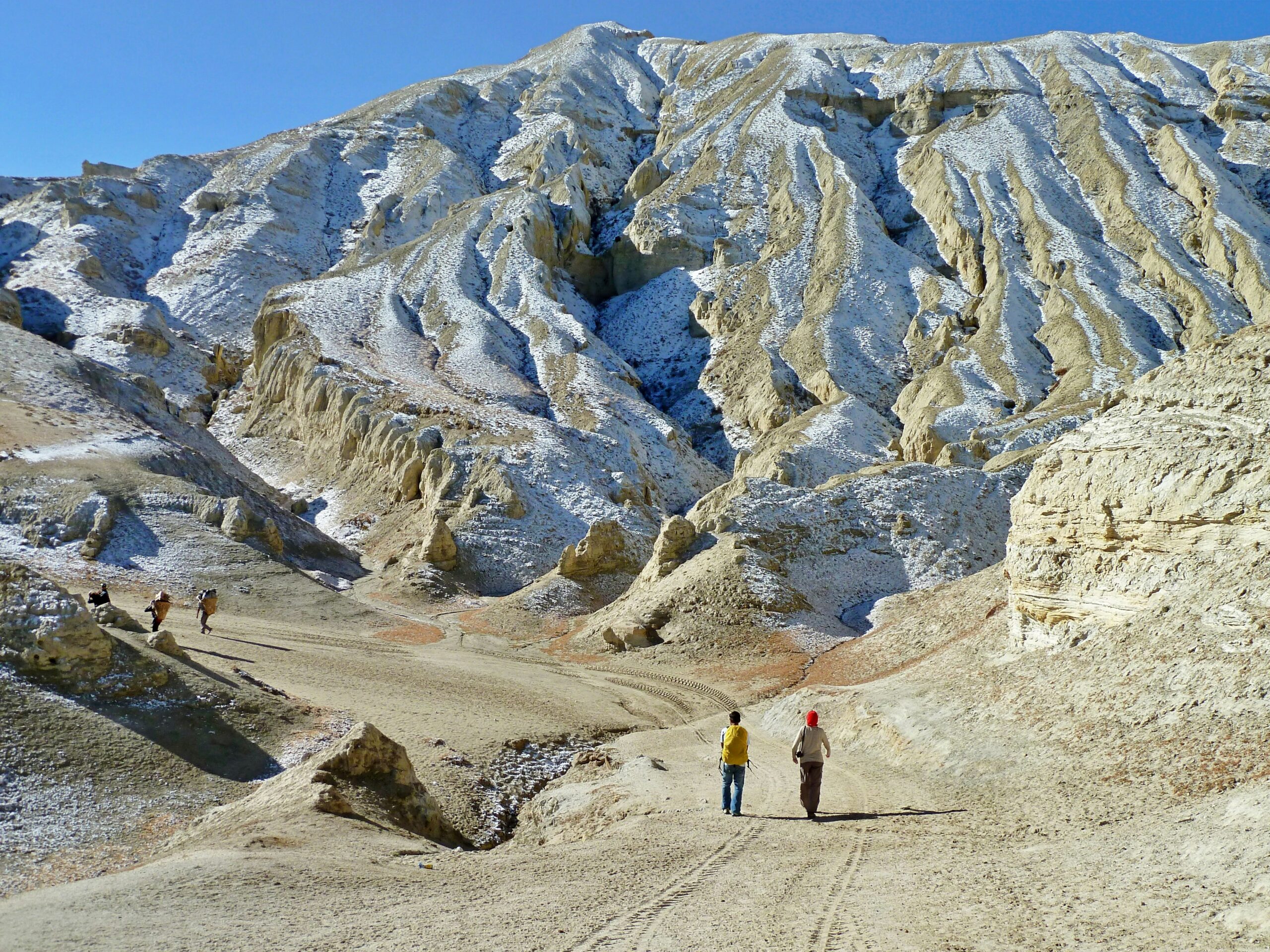
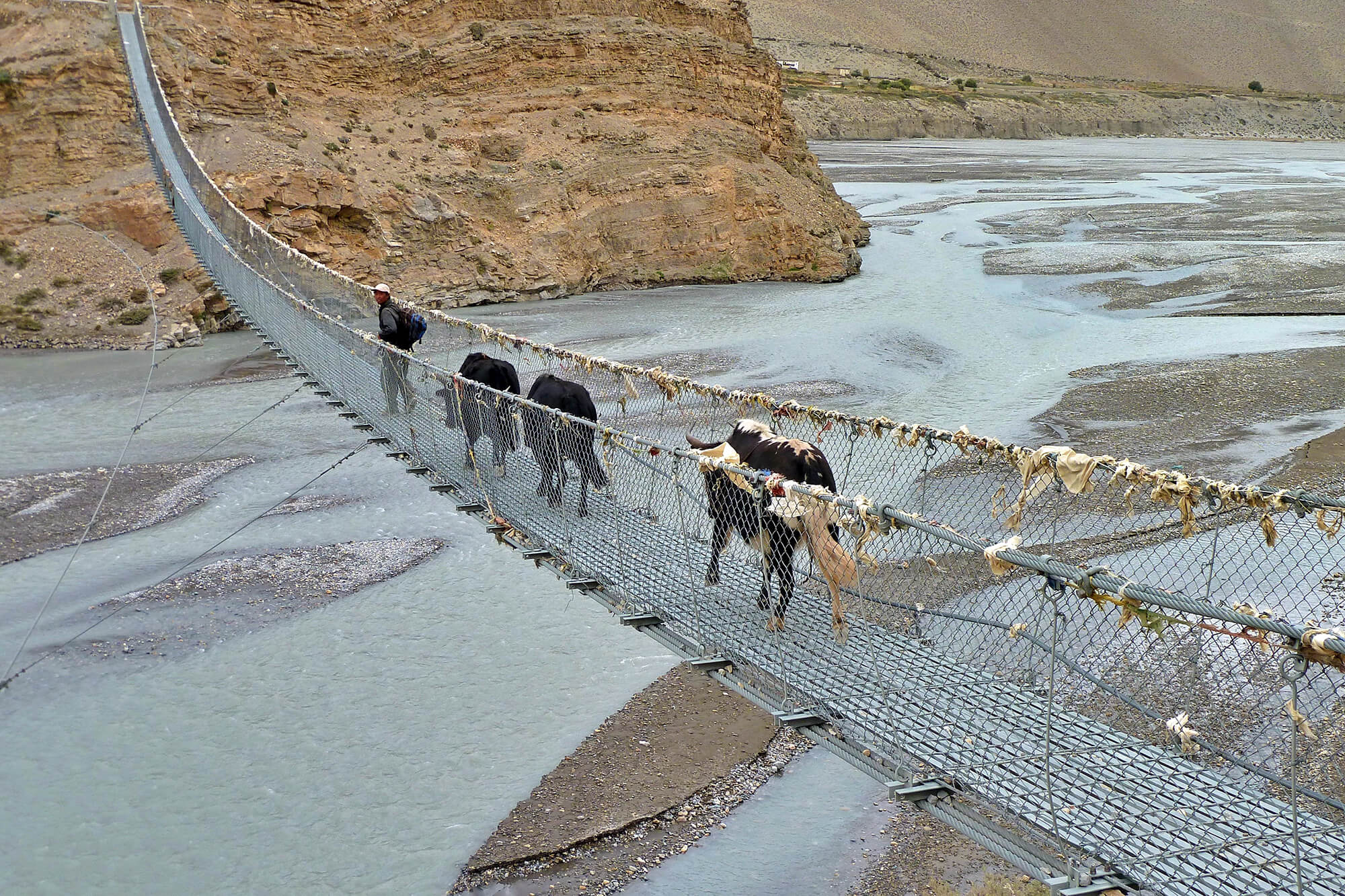








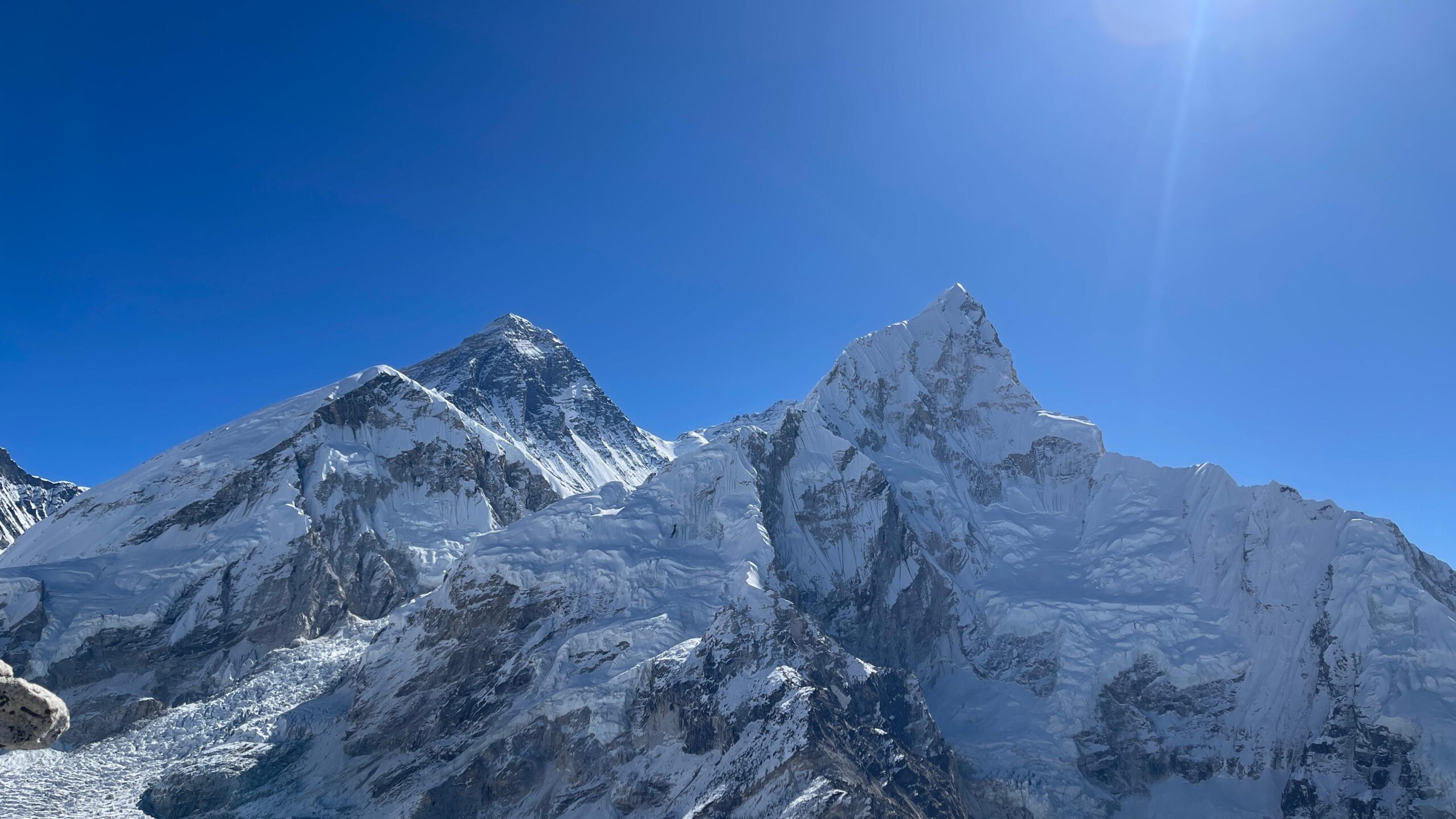
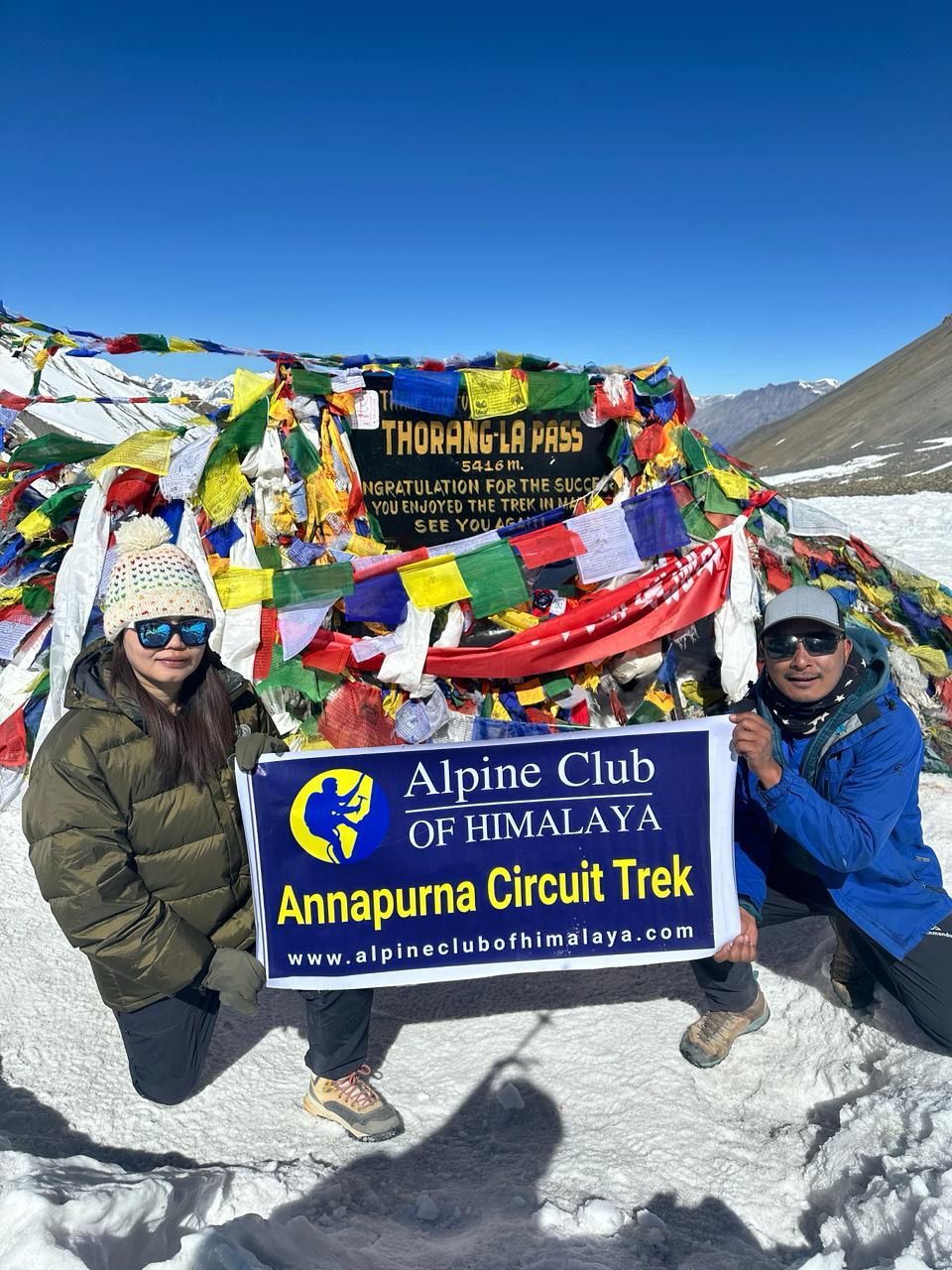
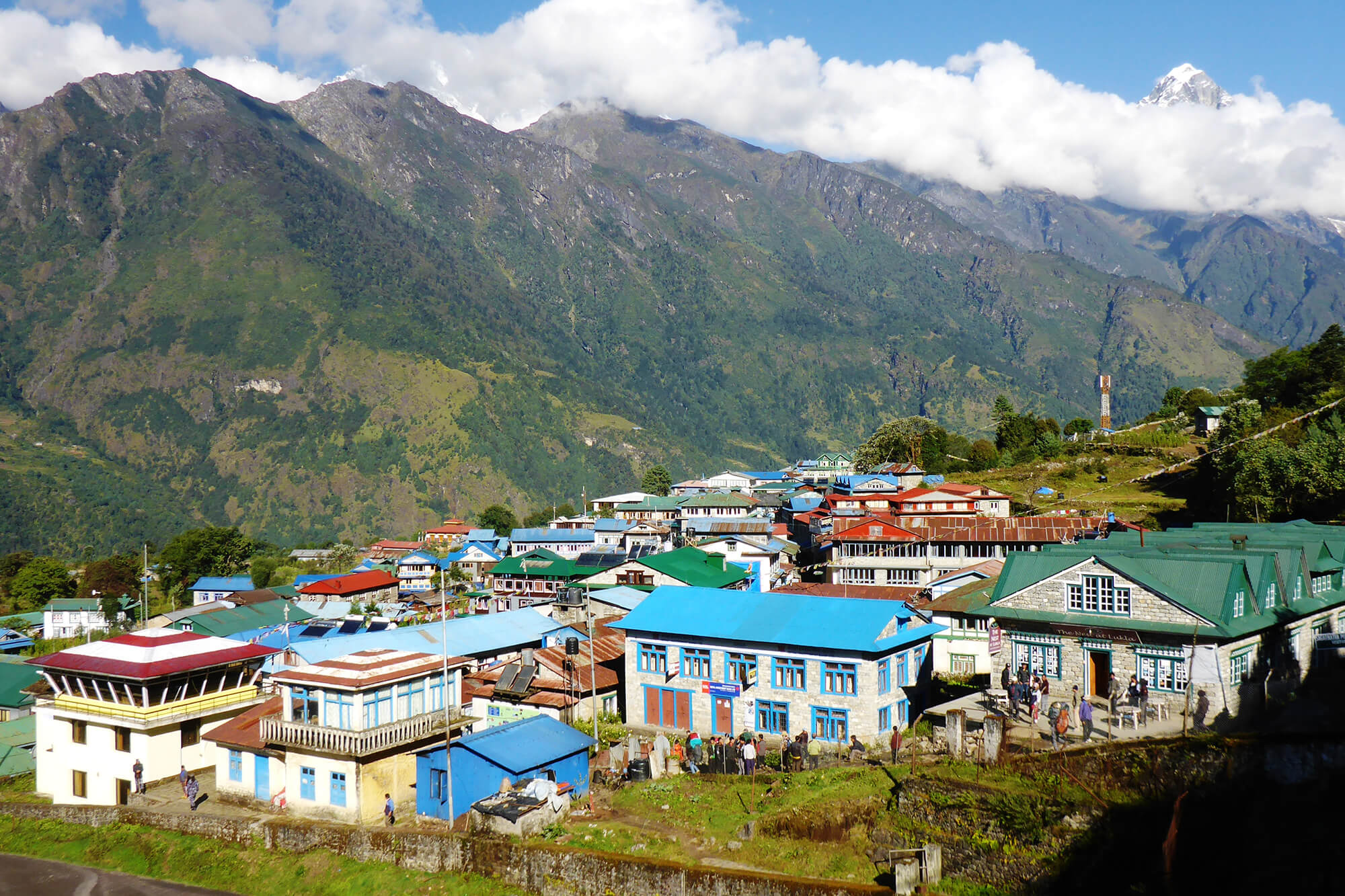
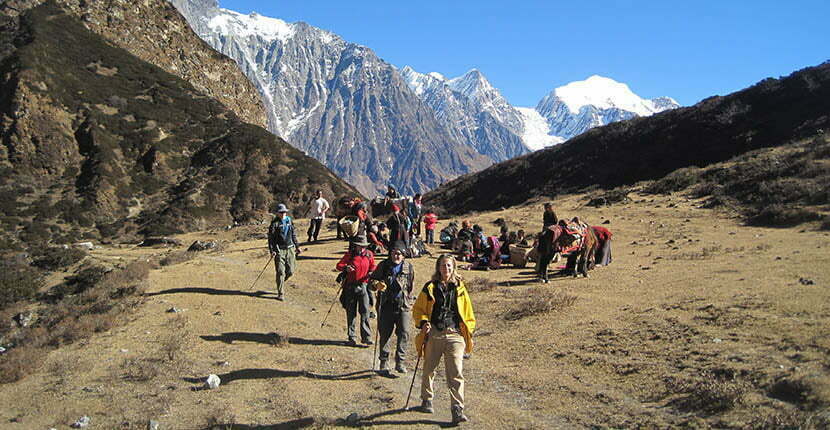
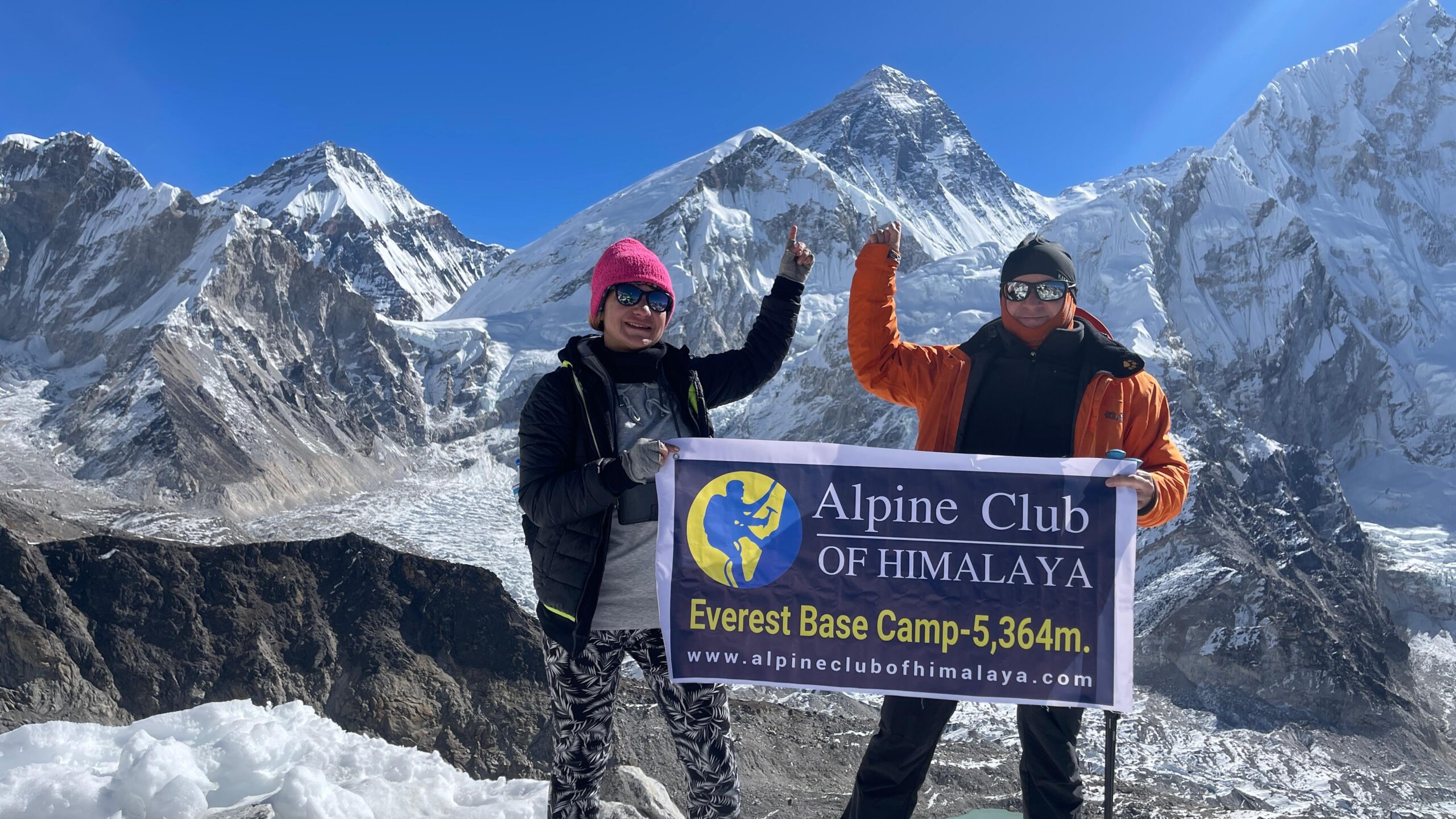
Write a Review